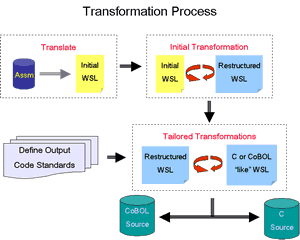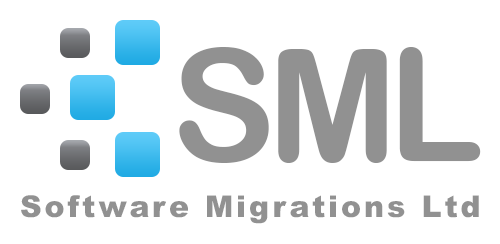FermaT Migration Service
The objective of the FermaT Migration Service is to enable existing
functionality of an Assembler application to be quickly and accurately
transformed to a higher-level language such as C or COBOL. Once transformed,
these systems are substantially easier to maintain and can evolve faster
to meet the changing needs of the business they support.
Many core applications have their roots in systems written in the 60’s
and 70’s. These systems still remain essential to the business and have
evolved with the organisation. However, the skills required to manage
these systems are highly specialised and in decline with the following
effects:
-
It is
more expensive to maintain the systems which are written in older more
complex languages.
-
It is
slower to make amendments to the system affecting the deployment of new
market initiatives, new revenue streams and customer satisfaction.
-
There
is greater risk associated with continuing to run and support a system
written in older languages as skills die and knowledge fades.
These systems have been tailored over the years to meet the changing
requirements of the business and in many cases contain the competitive
differentiators so important in today’s market.
SML provides an alternative to replacement with an off-the-shelf
package, which ensures the retention of this valuable customisation
without the risks inherent in manually re-writing the system.
Through
automated modernisation SML can guarantee the successful
modernisation of the existing system to a lower-risk language, capable
of a more rapid response to business needs without throwing away
the years of investment and tailoring that the system has undergone,
thus retaining competitive advantage and intellectual property.
Because of FermaT's use of a unique, formally defined high-level language
(WSL) and its specifically designed code transformations, the
migration process is totally automated. As a result, legacy systems
can be migrated quickly, requiring a fraction of the resources and cost necessary
to migrate the code manually. Unlike simple line by line language migration
technologies, FermaT's unique semantics preserving
code transformations enable the original application to be automatically restructured to its optimum state for migration
to the chosen new language.
This ensures that only functional code is
migrated to the new language, helping to ensure that the migrated code
is significantly easier to maintain and adapt than the original.
The process used by the Fermat Migration Service technically consists of three
basic steps:
|
 |
1. Translation from Assembler to WSL
A sophisticated Assembler parser is used to capture the entire functionality
of the Assembler code using full assembler listings. This is then automatically converted to the
intermediate Wide Spectrum Language (WSL) designed specifically to support code transformation.
2. Transformation of the WSL
Once the entire functionality of the Assembler code has been replicated
within WSL, a series of sophisticated code transformations (up to several
thousand per module) are automatically
applied to the code to restructure and simplify the code to its optimum
logical state, prior to migration to the chosen target language.
3. Translation from WSL to target language
Once the automatic restructuring has been completed, an additional set
of language specific transformations are applied which convert the WSL
representation of the Assembler.
|
Automated Code Transformation
Because of the FermaT's use of WSL and
Input/Output Parsers, tailoring the system to accommodate user specific
code structures and user written macros are easily achieved, enabling the
fully automatic generation of the new High Level Language without the need
for manual coding. In addition FermaT can be tuned to generate code to a specific
set of coding standards thereby improving the quality, consistency and
overall maintainability of the generated code.
|


